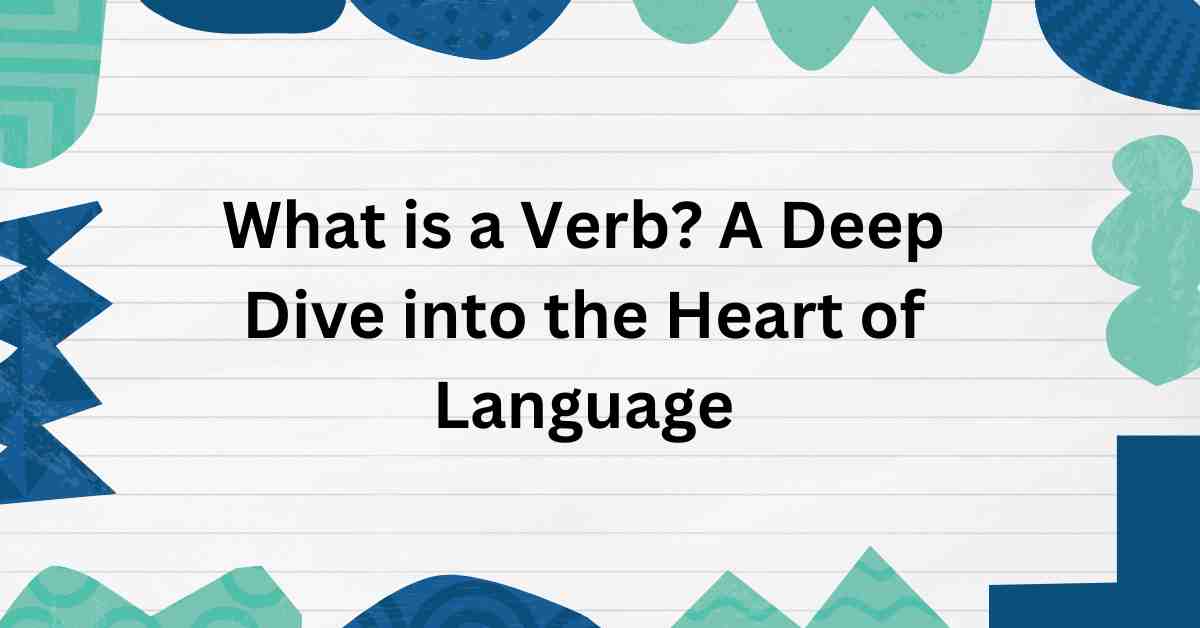Eye News Desk
What is a Verb? A Deep Dive into the Heart of Language

Language is a powerful tool that allows us to express our thoughts, emotions, and actions. At the center of every sentence lies a crucial element: the verb. But what is a verb? If you've ever pondered this question, you're not alone. Understanding verbs is key to mastering any language, and in this post, we'll explore what verbs are, how they function, and why they're so essential.
What is a Verb?
To begin with, what is a verb? Simply put, a verb is a word that conveys an action, occurrence, or state of being. Verbs are the backbone of sentences, providing them with meaning and direction. Without verbs, our sentences would be incomplete and lack the energy needed to communicate effectively.
The Role of Verbs in Sentences
So, what is a verb doing in a sentence? Verbs act as the action or linking element, connecting the subject to the action or state. For instance, in the sentence "She runs," the verb "runs" describes the action performed by the subject "she." In another example, "He is happy," the verb "is" links the subject "he" to the state of being "happy."
Different Types of Verbs
To fully understand what is a verb, it's important to recognize that verbs come in various forms, each serving a different purpose:
- Action Verbs: These verbs express specific actions. Examples include "run," "jump," and "write."
- Linking Verbs: Linking verbs connect the subject to additional information about the subject. Common examples are "is," "seem," and "become."
- Helping Verbs: Also known as auxiliary verbs, helping verbs work alongside main verbs to clarify tense, mood, or voice. Examples are "have," "do," and "will."
- Modal Verbs: Modal verbs express necessity, possibility, permission, or ability. These include "can," "may," and "must."
Why Verbs are Essential
Understanding what is a verb is crucial because verbs are fundamental to forming meaningful sentences. They inform us about what the subject is doing or what state the subject is in, providing clarity and purpose to communication. Whether you're writing a simple sentence or a complex one, verbs are the driving force behind the narrative.
How to Identify Verbs
Now that we’ve covered what is a verb, the next step is identifying them in sentences. A simple method is to ask yourself, "What is the subject doing?" or "What state is the subject in?" The answer will typically point to the verb. For example, in "The cat sleeps," asking "What is the cat doing?" reveals the verb "sleeps."
Conclusion
So, what is a verb? It's much more than just a word in a sentence—it's the key to action and expression. Verbs bring our language to life, enabling us to share our thoughts, actions, and states of being with others. Whether you're learning a new language or refining your grammar, understanding what is a verb is a fundamental step in mastering communication. Keep this in mind, and you'll find that your writing and speaking become clearer, more dynamic, and more effective.
- Tortoise: A Fascinating Creature of Patience and Longevity
- The value of `Mohanagar` stretches far beyond social media hype
- How Are You Meaning in Bangla – A Simple Guide
- Where is the Super Bowl 2025? Your Ultimate Guide
- What is Amazon Digital?
- How to Become a Blogger: Your Complete Guide
- The Mournful Day
- When is Memorial Day 2024 USA?
- How to Become a Dermatologist: Your Complete Guide
- How Many Cups in a Gallon? Your Essential Guide
































